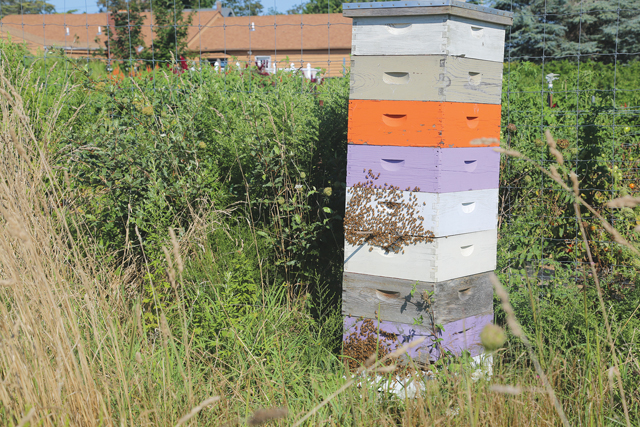Cold, wet spring hurt season’s honey yield across North Fork

The wet, cold spring has led to less honey this season on the North Fork.
All bees, not just honeybees, need flowers for food, and Long Island is increasingly losing flowery areas due to residential development and deer eating the plants.
“Long Island doesn’t have many large flowering areas providing consistent good supplies of nectar and pollen throughout the season, and the late summer/fall nectar and pollen sources are particularly limiting,” said Daniel Gilrein, the entomologist for Cornell Cooperative Extension of Suffolk County.
This is not a problem that arose overnight, but has been building for years. Laura Klahre of Blossom Meadow Farm in Southold sought to combat this by creating a bee sanctuary in her backyard to provide food for native bees. Most flowers bloom for only about two weeks, Ms. Klahre said, so it is important to have a variety of plants blooming at different times in order to give pollinators enough food throughout the season.
“You can’t just feed them for two weeks and think everything is going to be fine,” Ms. Klahre said. “On our farm, the whole big thing was having food for their entire life cycle.”
Ms. Klahre has been a beekeeper for 20 years, but in the past six years, she switched her focus from honeybees to native bees.
“The biggest thing people can do to help the pollinators is plant flowers,” Ms. Klahre said. “People think, ‘If I keep honeybees then I’m helping the pollinators,’ but no, the biggest problem is habitat loss.”
Donal Peterson, vice president of the Beekeepers Club of Long Island and beekeeper at 4-H in Riverhead, also said that this season was particularly bad for honeybees.
“We do have limited forage on Long Island,” Mr. Peterson said. “Years ago, there used to be a lot more plants but now everyone wants a nice green lawn.”
Green lawns are like food deserts to bees because there are not enough flowers for them to pollinate. A pound of honey is roughly equivalent to 2 million flower visits, so planting a few flowers in a yard is not enough to help support the bee population.
The lack of forage combined with this year’s unfavorable spring weather to result in a lower yield of honey. Lavender by the Bay in East Marion announced a two-jar per person limit on lavender honey on its social media accounts, and sold out within two days while they usually sell out in about a week.
“There never really seems to be enough honey to meet the demand for local Long Island honey anyway,” Mr. Peterson added.
While honeybees are important, all native bees are in need of help. Beekeepers and entomologists alike recommend that people plant a variety of flowers, and maybe let some weeds grow as well, like dandelions and clovers, to help pollinators feed.
Photo caption: Honeybee hives at Blossom Meadow Farm in Southold. (Credit: Rachel Siford)



